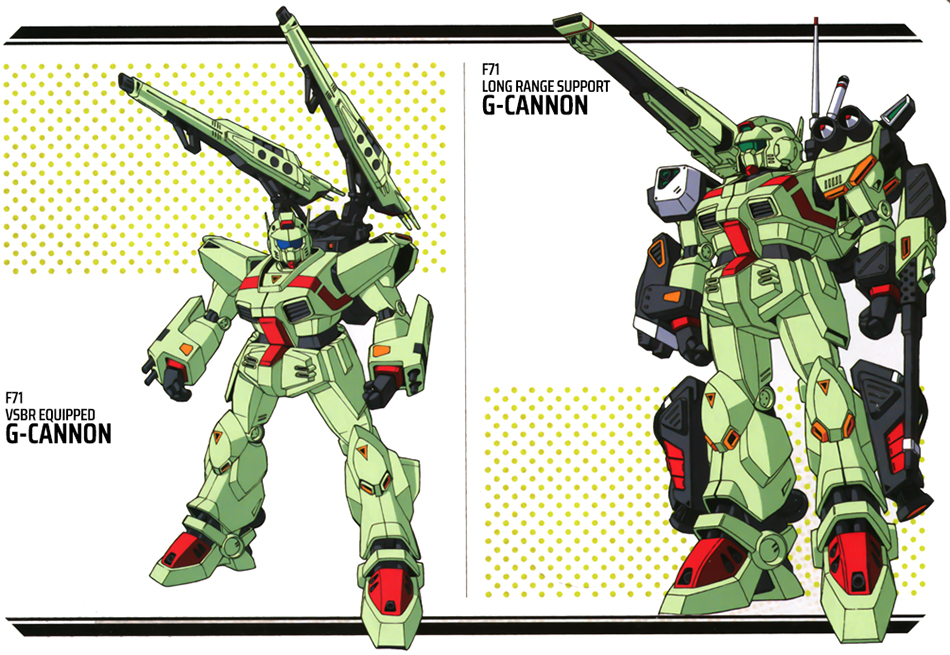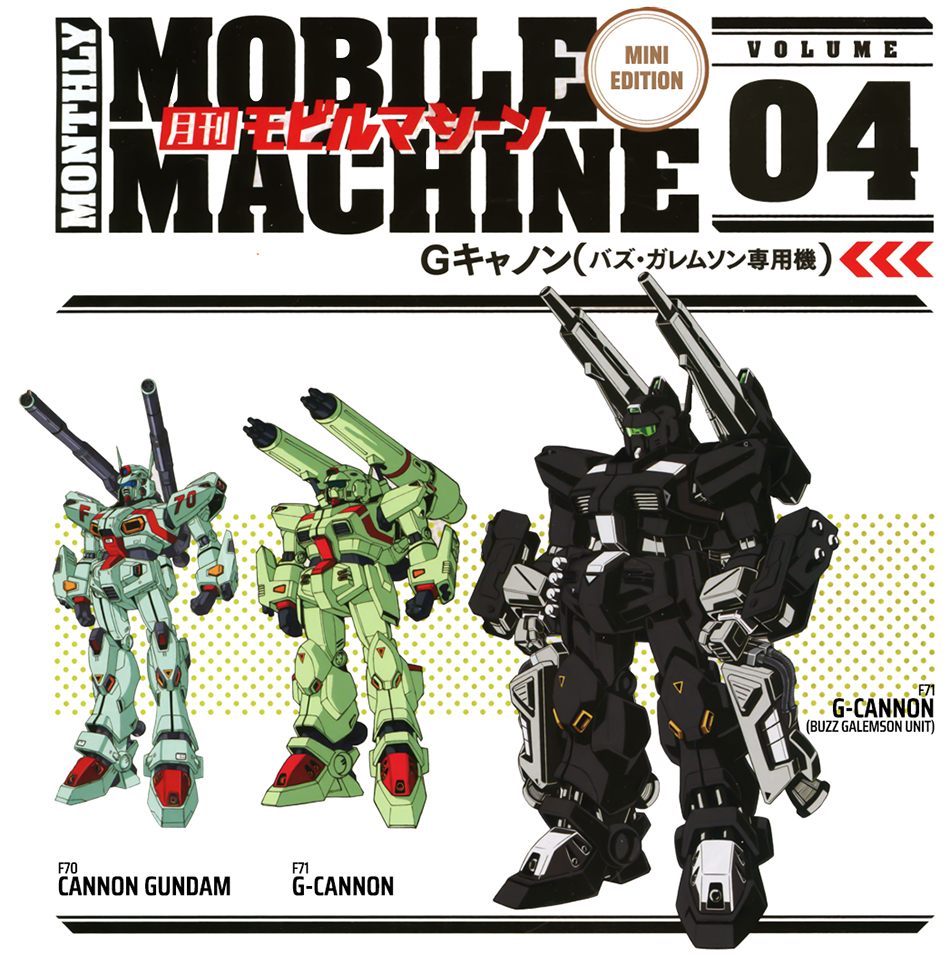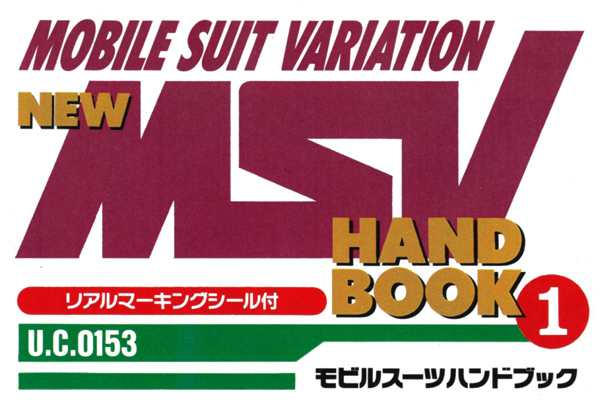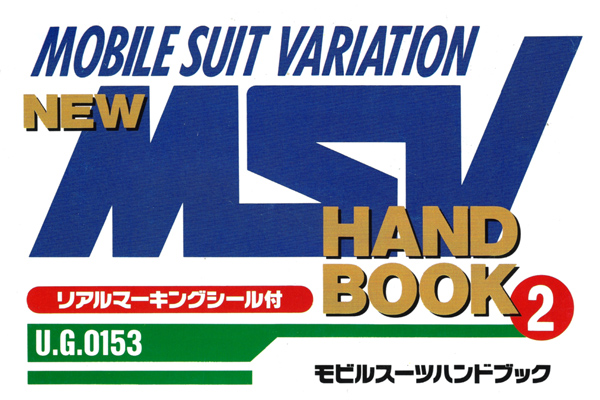MONTHLY MOBILE VOL.04
Model Number: F71
Overall Height: 14.3m
Full Weight: 21.4t
Armaments:
double beam gun x 2
vulcan gun x 2
beam spike x 2
beam cannon x 2
beam rifle
IDEALS & REALITY
SNRI’s grand plan envisioned the F70 Cannon Gundam being manufactured as the F71 by Anaheim and various other factories after rigorous testing and ironing out any mass-production kinks.
But when Anaheim’s Development Division laid eyes on the F70, they were positively livid about the proposed mass production scheme. Romero “Mustang” Marabal, the chief researcher at the time, didn’t mince words:
“It’s a pipe dream, plain and simple. SNRI is trying to sell a racing machine as a family sedan without changing a thing. Every single part is custom-made. Worse, they demand insanely high precision that subcontractors can’t handle. Heck, even for field repairs, you’d need techs trained by SNRI themselves. Oh, and get this – the avionics chips and OS are black boxes galore. Can’t touch ’em without special permission.”
Marabal’s scathing critique held water, even considering his involvement in the MSA-0120 design team. Military testing cast serious doubts on the F70’s operational readiness. Revamping the Federation Forces mobile suit lineup was, as SNRI themselves noted, nothing short of a complete overhaul of the existing system. While SNRI, as a research institution, had a revolutionary vision, they lacked the means to translate that vision into a realistic production line.
So, Anaheim (with some friendly politicians greasing the wheels at the Security Council) took it upon themselves to “update” the F71 proposal from an egghead’s top-heavy fantasy to a grunt’s battle-ready workhorse.
Most parts were swapped out for ones highly compatible with the RGM-109 Heavygun. Gone were the compound thruster vanes, the iconic chest hatch, and the high-precision head sensor unit. Save for the hard points, nearly all of the F90’s groundbreaking features were lost, and performance took a nosedive.
But here’s the kicker: using RGM-109 (and RGM-111 Hardygun) components dramatically slashed costs. Suddenly, mass production at Anaheim and other factories was feasible, and the door was open for third-party licensed production.
So, is the F71 a “dead copy,” as SNRI’s tech guru Miyasa Emmick fumed upon seeing the prototype? This author thinks not. In the Cosmo Babylonia Foundation War, the F71 and the Den’an Zon had an estimated kill ratio of 1.5 to 1. Sure, it lacked a beam shield, but the F71 proved its mettle. Just look at the G-Cannon still serving in our Amelia Defense Forces today, racking up impressive wins against the Side 2 Alliance..

(Left) During the development of the F91, a test unit was built to evaluate the additional generator and the balance of the VSBR. Since it wasn’t intended for actual combat, the VSBR was kept at a low output, allowing it to function with the F71’s generator. (Right) Developed by SNRI, the long-range bombardment type, also known as the F71C, is a force to be reckoned with. Its right shoulder-mounted ultra-long-range beam shooter, colloquially called the “Long Range Cannon,” was inspired by the F90L type and boasts an impressive firing range.
GALEMSON’S F71
The Frontier I air raid in early U.C. 0116 can be considered a precursor to the later Oldsmobile War. Records confirm that then-Lieutenant Buzz Galemson sortied in a modified F71 during this engagement.
His unit packed two beam cannons and an F90F beam spike, optimized for close-quarters colony interior combat.
Like its F70 prototype, the F71 was designed with such close-quarters combat in mind. Dubbed the “F71 Naked” by soldiers in the field, this configuration ditched the main guns and equipped a shield for up-close-and-personal engagements. In the Frontier Side defensive battle of 0123, it served as the Federation’s primary general-purpose mobile suit, filling in for the mostly-retired RGM-109.
Why Buzz Galemson chose the F71 for close-quarters combat remains a mystery. Some blame delays in the development of the general-purpose F80, while others speculate it was to gather data for a rumored close-combat mobile suit called the F60. Either way, with scant unit records remaining, we may never know the full story (ironically, what combat records we do have came from Oldsmobile).
The F71 may not have been the “perfect mass-production Gundam” of SNRI’s dreams, but it was a dependable, high-performance machine that doubled as a testbed for various units. It’s a testament to the wisdom of Romero Marabal’s design philosophy: “Machines should be simple enough for a grade-schooler to pilot and a refugee to maintain.”
(U.C.0146.10.10 Dinah Kim)





